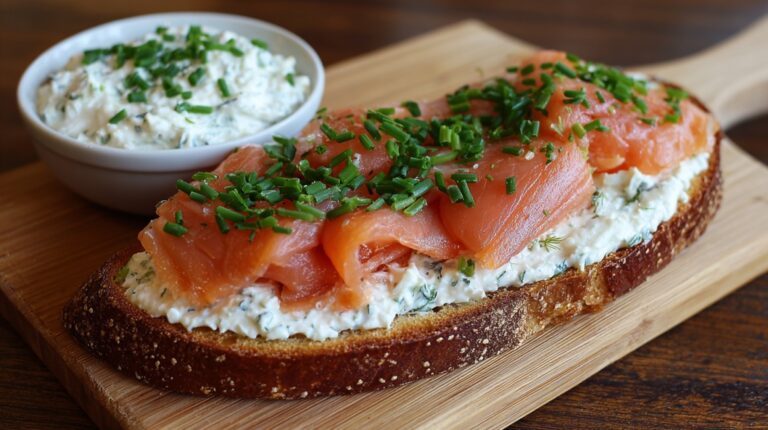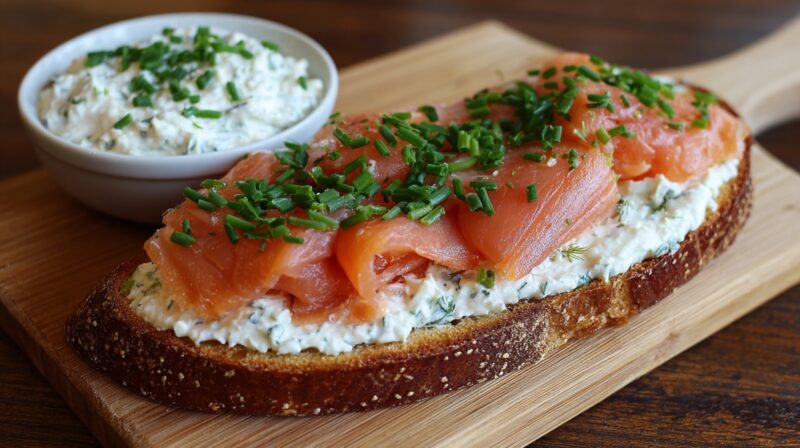
Germany has a strong culinary identity, and condiments often play a central role in elevating everyday meals.
Bold mustards, regional sauces, and spreads with centuries of tradition go far beyond simple ketchup or mayonnaise. A world of flavors awaits anyone ready to explore.
Here are ten underrated condiments that deserve more attention in kitchens worldwide.
1. Grüne Soße (Green Sauce)

Frankfurt celebrates Grüne Soße as one of its most iconic seasonal dishes. Made with seven herbs such as borage, sorrel, chives, cress, parsley, chervil, and burnet, it carries an unmistakably fresh taste.
Mixed with sour cream, yogurt, or mayonnaise, the texture is creamy while the herbs provide an earthy, refreshing bite.
Families in Hessen often serve it around Easter, marking the arrival of spring. Each cook has their own version, sometimes blending the herbs finely for smoothness, or leaving them slightly coarse for texture.
Served with hard-boiled eggs, boiled potatoes, or cold meats, it brings brightness to simple dishes. Restaurants in Frankfurt even hold festivals dedicated to it, showcasing variations passed down through generations.
- Key Pairing Tip: Spoon generously over boiled eggs or combine with cold cuts for a refreshing herbal lift.
2. Apfelkraut
Apfelkraut reflects centuries of Rhineland tradition. Created by reducing apples into a dark, glossy syrup, it captures both sweetness and tartness in each spoonful. Farmers originally made it as a way to preserve apples through the winter, and it quickly became a staple in rural kitchens.
Its versatility allows it to function as a breakfast spread, dessert drizzle, or savory glaze.
Paired with rye bread and aged cheese, Apfelkraut balances strong flavors with fruity sweetness. When brushed over roast pork, it caramelizes into a rich glaze that enhances the meat’s natural juices.
- Key Pairing Tip: Spread on rye bread with cheese or glaze roast pork for balanced depth.
3. Süßer Senf (Sweet Bavarian Mustard)
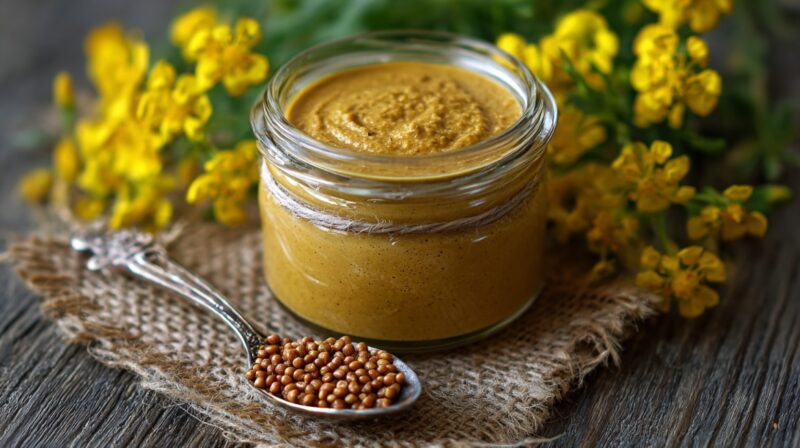
Süßer Senf is integral to Bavarian food culture. Mild, creamy, and slightly sweet, it differs greatly from sharper mustards.
Made with coarsely ground mustard seeds, vinegar, sugar, and spices, it creates a mellow but flavorful profile. Traditionally paired with Weißwurst, it softens the sausage’s seasoning, creating a balanced bite.
Its popularity stretches outside Bavaria, often found alongside pretzels at beer festivals. Because it’s approachable, many families use it in sandwiches or as a dipping sauce. Even those hesitant toward mustard find it easy to enjoy, as the sweetness tempers the usual sharpness.
- Key Pairing Tip: Serve with Weißwurst or soft pretzels to experience Bavarian tradition.
4. Sahnemeerrettich & Kren (Creamy & Plain Horseradish Paste)

Horseradish adds a fiery punch that wakes up the palate. Sahnemeerrettich, the creamy variation, softens that heat by blending horseradish with cream, giving it a milder, smooth finish. It works beautifully in sandwiches, with smoked fish, or as a condiment for roasted meats.
Plain Kren, on the other hand, delivers raw power. Sharp, pungent, and nose-tingling, it brings contrast to fatty, hearty meals.
A small spoonful is enough to transform roast beef, sausages, or boiled meats. Many German households keep both versions available, using them depending on mood and dish.
- Key Pairing Tip: Add creamy horseradish to smoked salmon or use plain Kren with roast beef for intensity.
5. Hausmachersenf (Homemade-Style Mustard)
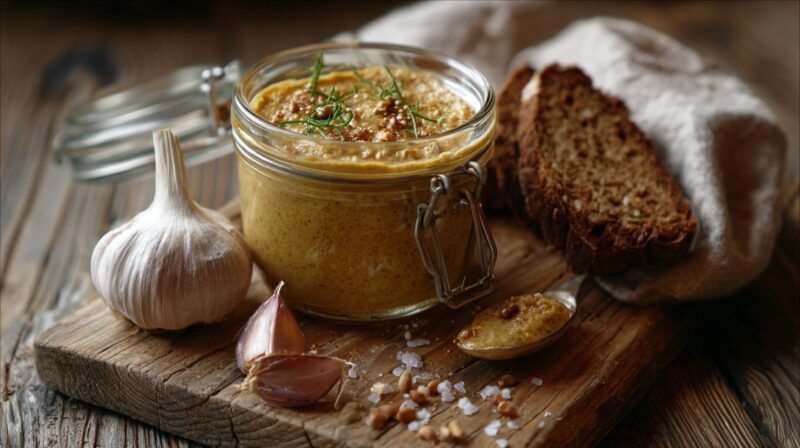
Hausmachersenf feels rustic, as if it came straight from a farmhouse kitchen. Coarsely ground mustard seeds provide texture, while vinegar, spices, and occasionally honey or beer create regional differences in flavor.
No two jars taste alike, reflecting family recipes passed down through generations.
It’s a favorite with sausages, lending depth and sharpness that cut through the fat.
Paired with cold platters, it enhances both meats and cheeses. Some regions prefer a sweeter note, while others lean toward spicier blends, offering endless variety for mustard lovers.
- Key Pairing Tip: Spread over sausages or use as a dip for pretzels to bring rustic flair to a meal.
6. Curry Ketchup
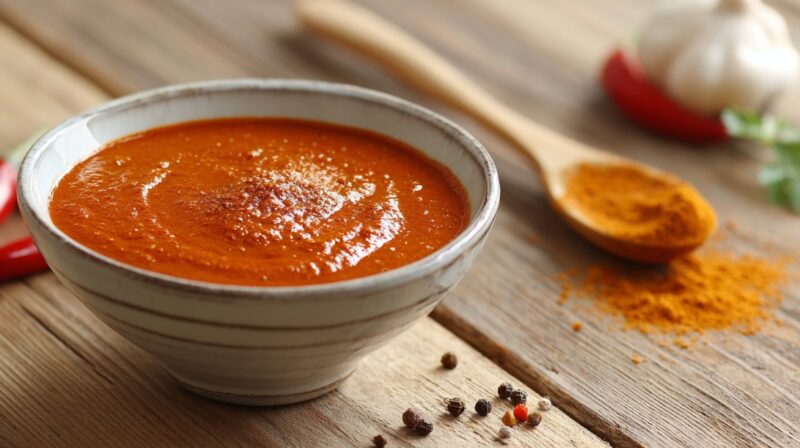
Few condiments capture modern German street food culture like curry ketchup. Born after World War II, when ketchup became widely available, it quickly evolved into the signature sauce for Currywurst.
A mix of tomato ketchup, curry powder, and spices, it blends tangy sweetness with aromatic spice.
Street vendors across Germany serve fries and sausages drenched in curry ketchup, turning simple food into a comfort staple. Its versatility extends into home kitchens, where it’s used with burgers, grilled chicken, or even as a base for marinades.
Each producer creates a slightly different version, ranging from mild and sweet to spicy and bold.
- Key Pairing Tip: Pour generously over fries or bratwurst for the classic Currywurst experience.
7. Zigeunersauce (Gypsy Sauce)
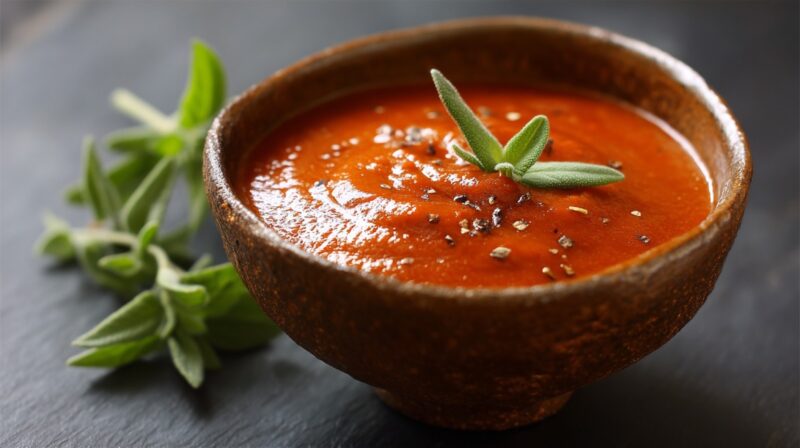
Zigeunersauce remains a favorite in traditional German households and restaurants. Made with tomatoes, peppers, onions, and paprika, it creates a savory-sweet balance that enhances grilled or breaded meats.
The sauce is usually simmered slowly, allowing the peppers and onions to soften and release their flavor.
Schnitzel topped with Zigeunersauce is a staple across Germany, often appearing on menus as “Schnitzel Zigeuner Art.”
At home, it is an easy way to dress up chicken, pork, or steak without complicated cooking. A jar of this sauce can instantly upgrade a weekday dinner into something special.
- Key Pairing Tip: Serve over schnitzel or steak to recreate a restaurant-style dish.
8. Kren (Horseradish Paste Without Cream)
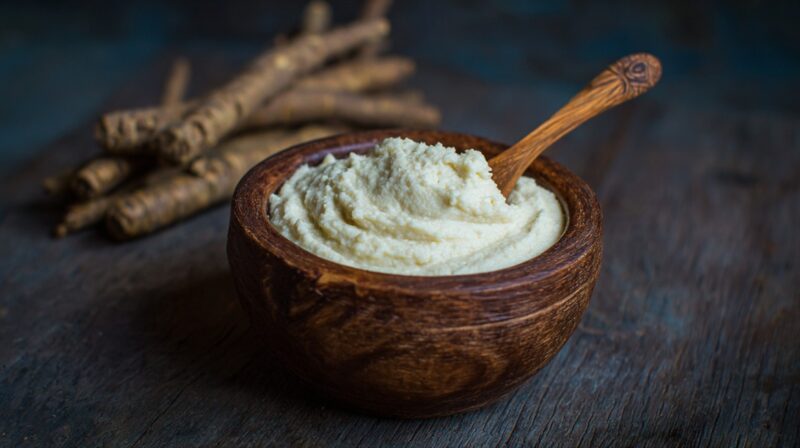
Plain Kren, without cream or additives, is as pure as horseradish gets. Its sharpness and intensity can surprise the unprepared, yet it plays an important role in balancing heavy dishes.
Families often serve it alongside boiled beef, sausages, or smoked meats, where it cuts through richness and provides clarity of flavor.
It is also popular during holiday meals, especially Easter, where it symbolizes strength and renewal on the table.
While creamy versions offer comfort, plain Kren delivers an invigorating kick that only bold palates fully appreciate.
- Key Pairing Tip: Use sparingly with smoked meats or sausages to add fiery balance.
9. Regional Gourmet Mustard Brands
Germany’s mustard heritage shines brightest in its artisanal brands. Händlmaier’s has earned fame for its sweet Bavarian mustard, a household favorite that pairs with Weißwurst and soft pretzels.
Born Feinkost, based in Thuringia, produces mustards with spicier profiles, showcasing regional flavor preferences.
Each brand reflects centuries of culinary tradition while adapting to modern tastes.
Gourmet mustard varieties often include honey, herbs, or beer as flavor enhancers, making them perfect for experimenting in sandwiches, dressings, and marinades.
Buying regional brands supports local producers while introducing flavors rarely found outside Germany.
- Key Pairing Tip: Use Händlmaier’s with sausages or pair Born Feinkost mustards with hearty stews.
10. MSG as Umami Seasoning (Umami-Boosting Condiment)
@eatmamahuhuEverybody loves to hate MSG. You’ve seen the hot takes, the xenophobic myths, the “no added MSG” labels. But ever wonder where it actually comes from? In 1908, Japanese chemist Kikunae Ikeda was eating his wife’s kombu dashi when he noticed a taste that didn’t fit into the usual categories – something deeper than salty or sweet. He named it *umami (*from the Japanese word umaiうま, meaning delicious), isolated the compound behind it (glutamate), and basically invented MSG as we know it. We’re not scientists, but we are flavor nerds. So we made our own version. Featuring mushroom, seaweed, and garlic, all naturally rich in glutamate, mixed together to do what MSG does best. Starting today, you’ll find a jar of M.S.G. on every table at our restaurants. Extra flavor, on the house.
MSG brings a scientific touch to traditional German cooking. Though often misunderstood, it enhances natural savory flavors without adding its own taste.
A small amount can transform soups, gravies, and sauces into something more satisfying, making each ingredient shine.
Chefs use MSG sparingly, knowing it magnifies umami without overpowering.
Home cooks who experiment with it discover that it elevates familiar dishes such as goulash, potato soup, or mushroom sauces. Its growing acceptance in German kitchens highlights a willingness to embrace both heritage and innovation in food culture.
- Key Pairing Tip: Sprinkle lightly into gravies, stews, or stir-fries for enhanced depth of flavor.
Why These Matter
Condiments carry far more significance than simply adding flavor to a dish. Each one reflects the heritage of its region and the ingenuity of those who created it.
German food traditions have always emphasized balance, practicality, and regional pride, and condiments are a direct expression of that culture.
- Every condiment highlights a particular region, such as Frankfurt’s Grüne Soße or Bavaria’s sweet mustard, showing how food binds communities together.
- Recipes like Apfelkraut date back centuries, reflecting ways people preserved seasonal harvests long before refrigeration.
- Simple meals of potatoes, bread, or sausages become something remarkable with the right sauce, spread, or mustard.
- Even modern elements like MSG demonstrate how German kitchens adapt tradition while welcoming innovation.
Each jar or spoonful holds more than taste, it carries cultural memory. Families pass recipes down, regional festivals celebrate their specialties, and local brands turn small-batch traditions into household names. A kitchen stocked with these condiments is not just better equipped for flavor; it becomes part of a wider culinary story.
Even MSG, often debated, highlights how flavor science and tradition can work together.
Summary
German cuisine has more to offer than just sausages and beer. Condiments like Düsseldorf mustard, green sauce, Apfelkraut, and even MSG deserve a spot in modern kitchens.
Experimenting with them adds character to everyday meals and builds a deeper appreciation for German food traditions.
Trying one or two new condiments each week is an easy way to transform ordinary dishes into something extraordinary.
Related Posts:
- You Will Forget the Hot Dogs After Trying These…
- 5 Best German Bakeries in Florida You Must Visit
- My Top 5 Favorite Traditional Dishes You Need To Try…
- If You Want to Enjoy Real Beer, Just Choose One From Germany
- 10 Best German Restaurants in Florida 2024 -…
- Secret to Real German Potato Salad (And Why It’s…



